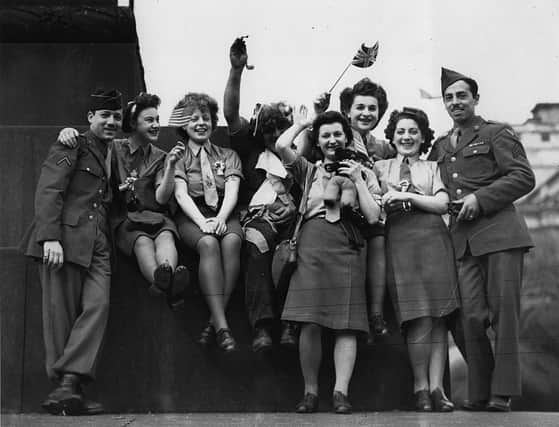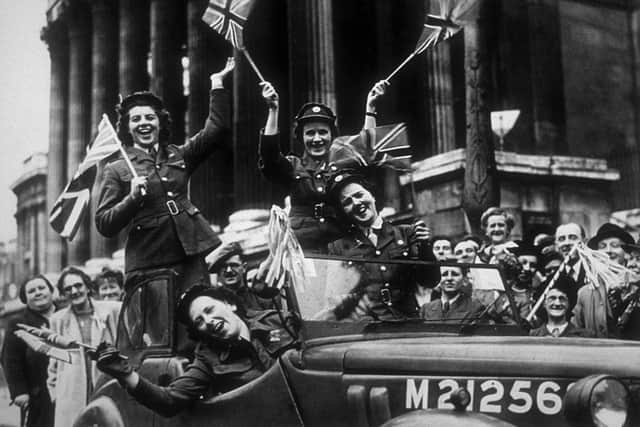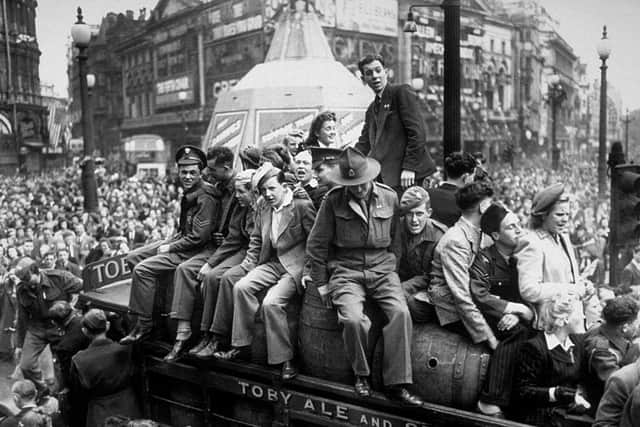15 facts about VE Day: interesting things you should know about WW2, Winston Churchill and what happened in 1945


Originally intended to commemorate the 75th anniversary of VE Day, which marks the end of the Second World War in Europe, nationwide plans had been drawn up to celebrate the occasion.
However, they’ve had to be scrapped because of the coronavirus lockdown, so many of us will be celebrating from behind closed doors.


Advertisement
Hide AdAdvertisement
Hide AdIf you’re curious about the history of VE Day, we’ve prepared some facts about Victory in Europe Day and World War II to test your knowledge and fill in the gaps.
How many people died in World War Two?
It’s estimated that over 75 million people died due to the effects of World War II, whether through direct combat or more indirect causes.
That death toll is a greater number than the entire population of Great Britain today.


This figure includes about 20 million military personnel and 40 million civilians.
What were the big world changes?
Advertisement
Hide AdAdvertisement
Hide AdThe colossal impacts of World War Two led to major changes in all walks of life for years to come.
On a political level, the Second World War gave way to the Cold War, which saw America and Russia - allies during the war - turn on each other in a dangerously competitive race to acquire nuclear weapons capabilities.
The conflict never resulted in direct declared war between the two superpowers, but the fear that it might at any moment kept the world nervously on its toes.
When did World War Two start?
World War Two began on 1 September 1939.
Why did World War Two start?
Having been one of the countries to lose the First World War, Germany had to sign an agreement that said they were to blame for the conflict, and also had to pay a fine and lose some of their acquired land.
Advertisement
Hide AdAdvertisement
Hide AdAdolf Hitler and his Nazi Party ignored the agreement and secretly started building up their army and invading and taking back lands they had lost.
In September, after warnings from other countries not to do so, Germany invaded Poland; Great Britain and France declared war on Germany.
Which countries fought in World War Two?
The countries who fought against Germany were known as the Allies.
Those who fought with Germany were known as the Axis powers.
Advertisement
Hide AdAdvertisement
Hide AdThe Allied countries were; Great Britain, France, United States, Greece, Australia, Canada, Belgium, India, Poland, South America, and many more.
The Axis countries included; Germany, Italy, Japan, Hungary, Romania, Slovakia and Bulgaria.
How did Hitler die?
By 1944, many of the countries captured and occupied by Axis powers were freed by the Allies.
With Germany and the Axis powers on the defensive, Adolf Hitler took his own life in April 1945; a week later, Germany surrendered.
How did World War Two end?
Advertisement
Hide AdAdvertisement
Hide AdAfter Hitler took his own life and Germany surrendered, British Prime Minister Winston Churchill announced that the war was over on 8 May 1945, a date that was known as VE Day (Victory in Europe Day).
Despite the celebrations, the war wasn't technically over across the globe until 2 September 1945, when Japan's surrender from the conflict was officially signed.
Why did Japan join World War 2?
Ahead of their joining of World War Two, Japan was already engaged in their own conflict with China, a war which was putting much economic strain on the island nation.
America placed an oil embargo on Japan and demanded the country withdraw unconditionally from China.
Advertisement
Hide AdAdvertisement
Hide AdIn retaliation, and with the odds stacked against them, Japan launched a controversial attack on Pearl Harbour - the United States’ naval base in Hawaii - in December 1941.
The aftermath of the attacks saw both Japan and America enter World War Two.
Some more ‘unusual’ facts about World War Two:
- British soldiers got three sheets of toilet paper a day.
- To avoid using the German-sounding word ‘hamburger’, Americans instead called a hamburger a liberty steak.
- Britain built 132,500 aircraft during WW2.
- Britain had the least rationing of any country in Europe.
- Only a few countries stayed neutral in WW2, including Spain, Sweden and Switzerland.
Advertisement
Hide AdAdvertisement
Hide Ad- Calvin Graham was only 12 years old when he enlisted in the U.S. Navy, and is thought to be the youngest person who fought in WW2. He won a Bronze Star and a Purple Heart before the Navy found out his true age.
- Rudolf Hess, Adolf Hitler’s deputy in the Nazi party, was the last person to have been incarcerated in the Tower of London.
